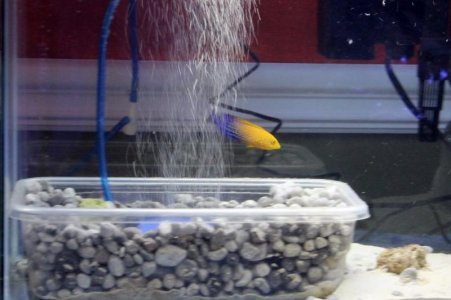Jstn
Member
So I only have a kole and 3 1.5" bipartitus wrasse in my 90 after a velvet reboot (all new Qt fish). I have a 4" yellow corris in my 20 clown tank that I never added to the 90 after I found I had velvet. Now he is too big for the 20, but I am scared he would be too agressive on the leopard wrasses, should I wait for more wrasse to be added before moving him over or should I be fine?
The last time I added a single bipartitus wrasse, he chased him around and ultimately stressed that fish out, now the three are acclimated to the 90 and out number him.
The last time I added a single bipartitus wrasse, he chased him around and ultimately stressed that fish out, now the three are acclimated to the 90 and out number him.


